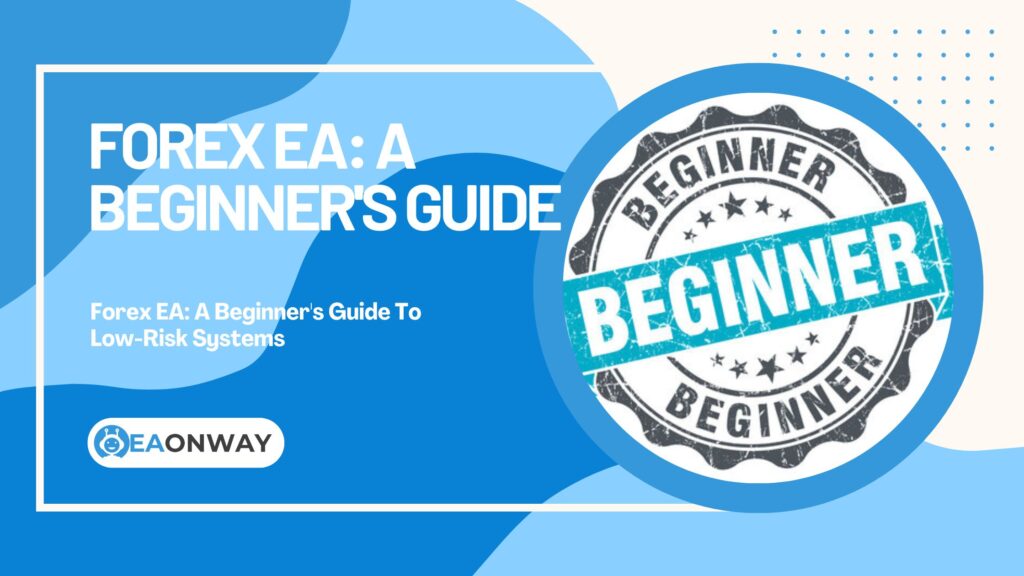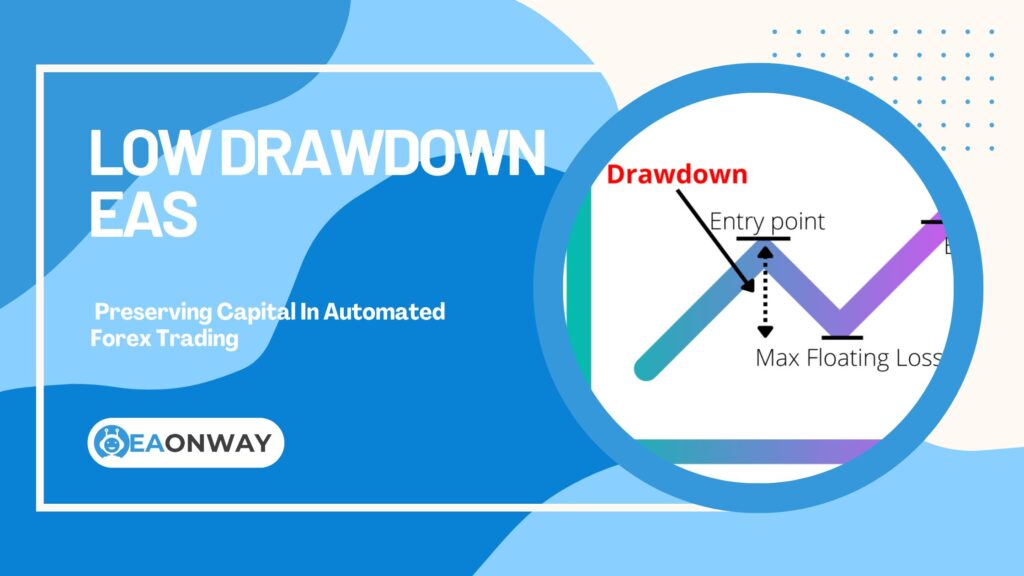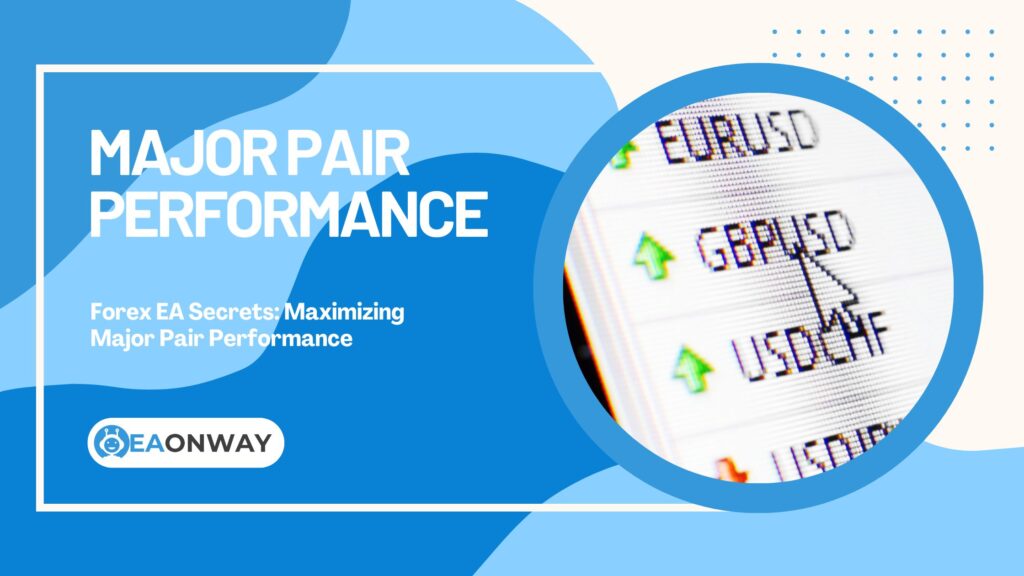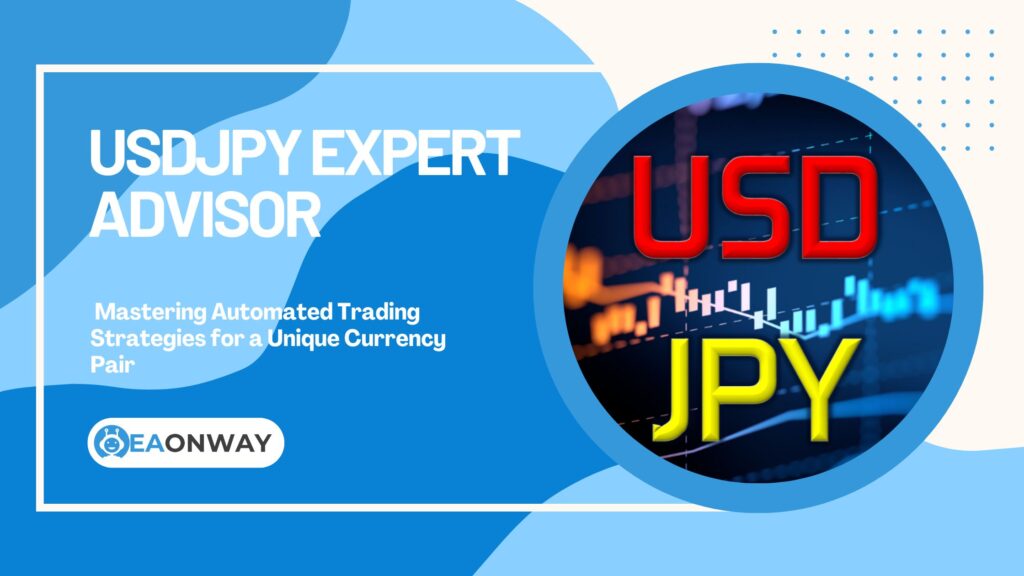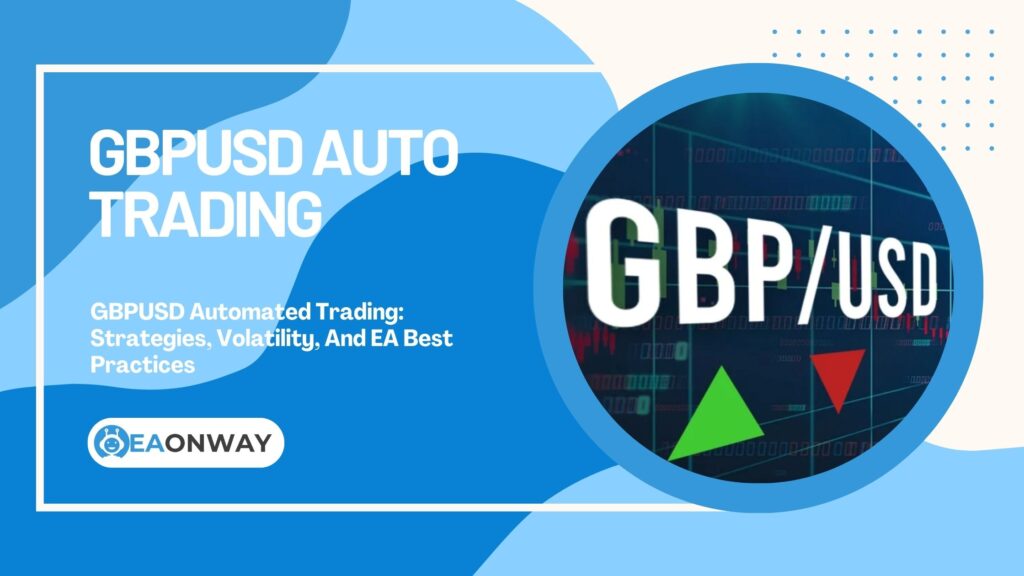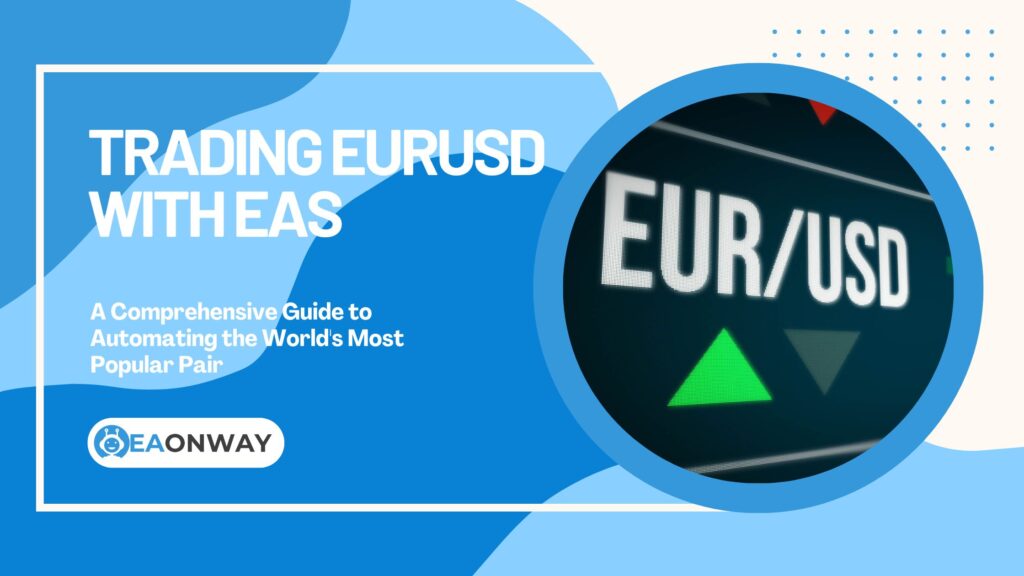Common EA Trading Strategies
Mean Reversion EAs: Navigating Market Pullbacks with Automated Systems
##Mean Reversion EAs: Navigating Market Pullbacks with Automated Systems
Have you ever watched a currency pair’s price surge dramatically, only to feel an instinct that it’s gone too far, too fast, and is due for a pullback? Many traders experience this, and Mean Reversion EAs are sophisticated automated trading systems designed to capitalize on precisely this type of anticipated market behavior, especially within Forex mean reversion scenarios. These algorithmic trading bots operate on the principle that prices, after significant deviations, tend to return towards an average or “mean” level. Understanding how these Expert Advisors (EAs) function, their reliance on a statistical edge, and the inherent risks is crucial for anyone exploring automated trading.
This article delves into the world of Mean Reversion EAs, offering a comprehensive exploration for those looking to understand these tools. We will demystify concepts like market correction trading and statistical arbitrage, explain the core mechanics of these EAs, and discuss the common indicators they employ, such as those used in an RSI mean reversion or Bollinger Bands strategy. Crucially, we will highlight the potential pitfalls and emphasize the importance of realistic expectations, particularly concerning drawdown management and the myth of guaranteed profits. The goal is to equip you with the knowledge to assess Mean Reversion EAs objectively, understanding both their potential and their significant limitations.
Key Insights on Mean Reversion Expert Advisors
Here’s a quick summary of what you’ll learn about Mean Reversion EAs:
- Core Principle: Mean reversion suggests that asset prices, after deviating significantly, tend to revert to their historical average or mean. EAs automate strategies based on this.
- How They Work: These EAs identify overbought or oversold conditions, often using technical indicators, to predict potential price corrections and execute trades accordingly.
- Statistical Edge: Profitability relies on a statistically validated tendency for prices to revert under specific conditions, not on predicting every market move.
- Common Indicators: Tools like Bollinger Bands, RSI, and Standard Deviation Channels are frequently used to signal potential entry and exit points for these counter-trend EAs.
- Significant Risks: Mean reversion strategies can incur substantial losses if a market enters a strong, sustained trend against the EA’s position. “Catching a falling knife” is a real danger.
- Not a Guarantee: No EA, including those based on mean reversion, offers guaranteed profits. Performance depends on strategy, market conditions, and risk management.
- Essential Due Diligence: Thorough backtesting, understanding performance metrics like profit factor and drawdown, and continuous monitoring are vital.
Understanding Mean Reversion in Financial Markets
To grasp how Mean Reversion EAs operate, it’s essential first to understand the underlying concept of mean reversion itself, especially within the dynamic Forex market. This forms the bedrock of any mean reversion strategy.
What Is Mean Reversion?
Mean reversion is a financial theory suggesting that asset prices and historical returns eventually revert to their long-run mean or average level. This average can be the historical average of the price or another relevant benchmark. “The concept of ‘reversion to the mean’ suggests that asset prices and historical returns eventually revert to their long-run mean or average level (Source: Investopedia, Definition of Mean Reversion).” Essentially, if a stock, currency, or commodity price moves significantly away from this average, mean reversion theory posits it will eventually return. This is a core idea behind many reversion to mean theory applications in trading.
Why Does Mean Reversion Occur in Forex?
Mean reversion tendencies in the Forex market can be attributed to several factors:
- Overreactions: Traders may overreact to news or events, pushing prices to unsustainable extremes. As emotions cool or new information emerges, prices may correct.
- Profit-Taking: After a strong directional move, traders who profited may start closing their positions, causing a counter-move or pullback.
- Market Equilibrium: Economic forces and fair value perceptions can act as anchors. If a currency pair deviates too far from what might be considered its fundamental value, market participants may trade in a way that pushes it back.
- Natural Market Rhythms: Markets often move in waves or cycles, with periods of expansion followed by contraction or consolidation. These “breathers” can look like mean reversion on shorter timeframes. Academic studies, such as those on market efficiency, sometimes explore anomalies like short-term return reversals that align with mean reversion ideas (Source: Journal of Finance, Jegadeesh, 1990, “Evidence of Predictable Behavior of Security Returns” – Abstract available, full paper may require access).
It’s important to note, however, that mean reversion is a tendency, not an ironclad law. Markets can and do establish new long-term trends, and what appears to be a deviation can sometimes be the beginning of a new price regime.
Differentiating Mean Reversion from Trend Following
How does mean reversion contrast with trend-following strategies?
Mean reversion strategies operate on the assumption that prices will return to an average after an extreme move; they are inherently counter-trend. Trend-following strategies, conversely, aim to identify the direction of the prevailing market trend and trade in that same direction, assuming the trend will continue. Mean reversion EAs will typically look for selling opportunities when prices are high and buying opportunities when prices are low relative to a mean, while trend-following EAs do the opposite.
How Mean Reversion EAs Capitalize on Market Behavior
With a foundational understanding of mean reversion, we can now explore how Mean Reversion EAs, as specialized automated trading systems, are designed to exploit these potential market corrections. These algorithmic trading bots aim to systematically identify and act upon these patterns.
What Exactly Are Mean Reversion EAs?
Mean Reversion EAs are Expert Advisors—software programs written in languages like MQL4 or MQL5 Expert Advisor code—that automatically execute trades on a trading platform (like MetaTrader 4 or 5) based on a pre-defined mean reversion strategy. They analyze market data, identify potential mean reversion setups according to their algorithm, and can open, manage, and close trades without manual intervention. These EAs are a form of statistical arbitrage tool when applied to exploiting temporary mispricings or deviations.
The primary goal of a Mean Reversion EA is to enter trades when a price is perceived to have moved too far from its statistical mean or a dynamic baseline, anticipating a “reversion” or “correction” back towards that mean. This often involves selling when the price is considered “overbought” and buying when it’s “oversold.”
The Core Logic: Identifying Deviations and Anticipating Corrections
The fundamental logic behind a Mean Reversion EA involves several steps:
- Establishing a “Mean”: The EA first needs a way to define the mean or baseline. This could be a simple moving average, an exponential moving average, a regression channel, or more complex statistical calculations.
- Measuring Deviation: Once a mean is established, the EA measures how far the current price has deviated from this mean. This is often quantified using standard deviations or percentage changes.
- Identifying Extreme Levels: The EA’s algorithm will have predefined thresholds that signify an “extreme” deviation. Crossing these thresholds triggers a potential trading signal.
- Entry Signal: If the price moves, for example, two standard deviations above the mean, the EA might interpret this as an overbought condition and generate a sell signal, anticipating a fall back towards the mean. Conversely, a move far below the mean might trigger a buy signal.
- Trade Management: Once a trade is entered, the EA will manage it according to its rules. This includes setting take-profit targets (often near the mean or a certain distance back towards it) and stop-loss orders to limit potential losses if the price continues to move against the position. Some EAs might use a grid trading system approach to scale into positions, which significantly increases risk.
Key Components of a Mean Reversion EA’s Algorithm
A typical Mean Reversion EA integrates several key components in its algorithm:
- Mean Definition Logic: How is the ‘average’ price calculated? (e.g., Simple Moving Average, Exponential Moving Average, custom calculations).
- Deviation Thresholds: Specific levels (e.g., 2 standard deviations, specific RSI values) that trigger entry signals.
- Entry Rules: Conditions that must be met to open a trade (e.g., indicator signals, price patterns).
- Exit Rules:
- Take Profit: Levels at which to close a profitable trade (e.g., back at the moving average, a fixed pip target).
- Stop Loss: Levels to close a losing trade to manage risk. This is crucial for drawdown management.
- Risk Management Module: Rules for position sizing, maximum allowable drawdown, and potentially a profit factor calculation target for performance.
- Filters: Additional conditions to avoid trading in certain market environments (e.g., low volatility, major news events). Some advanced EAs might incorporate elements of volatility mean reversion, adapting their parameters based on current market volatility.
What is a Statistical Edge in Mean Reversion Trading?
A statistical edge in mean reversion trading refers to a demonstrable, quantifiable advantage where, over a large number of trades, the probability of price reverting to a mean under specific, identifiable conditions is greater than it continuing to diverge. This edge doesn’t mean every trade will be a winner; rather, it implies that the strategy is expected to be profitable in the long run due to the probabilities favoring corrective moves after defined deviations. Trading edge development for mean reversion involves rigorous historical testing (backtesting mean reversion strategies) to identify these profitable patterns and the conditions under which they hold true.
This edge is often derived from observing historical price behavior and identifying patterns where extreme price movements were more likely followed by a correction than a continuation. The “statistical” part implies that this tendency has been observed and measured, providing a probabilistic basis for the trading decisions made by the Expert Advisor (EA).
Essential Indicators and Tools for Mean Reversion Strategies
Mean Reversion EAs rely heavily on technical indicators to identify potential entry and exit points. These tools help quantify market sentiment and pinpoint when a price might be overextended.
What Indicators Are Commonly Used for Mean Reversion?
Several technical oscillator indicators and channel-based tools are staples in mean reversion strategies due to their ability to signal overbought or oversold conditions and price extremes. The most common include Bollinger Bands, Relative Strength Index (RSI), and Standard Deviation Channels. These indicators help the EA decide when a market correction trading opportunity might be present.
Bollinger Bands: Gauging Volatility and Extremes
How do Bollinger Bands assist in mean reversion?
Bollinger Bands, developed by John Bollinger, consist of a middle band (typically a 20-period simple moving average) and two outer bands set at a standard deviation (usually two) above and below the middle band.
- Overbought/Oversold Signals: Prices touching or exceeding the upper band can be interpreted as overbought, suggesting a potential pullback (sell signal). Conversely, prices hitting or breaching the lower band can indicate an oversold condition, hinting at a potential rally (buy signal).
- Volatility Indication: The bands widen during periods of high volatility and contract during low volatility. This helps EAs adjust to changing market conditions; for instance, wider bands might require larger price moves to be considered “extreme.”
- A core concept is that “price spends about 90% of the time between the bands” (Source: BollingerBands.com, Basic Bollinger Band Interpretation). This statistical observation underpins their use in identifying deviations.
A Bollinger Bands strategy within an EA would look for these touches or breaches as primary entry signals, often combined with other filters.
Relative Strength Index (RSI): Identifying Overbought/Oversold Conditions
How does the RSI help identify mean reversion opportunities?
The Relative Strength Index (RSI), developed by J. Welles Wilder Jr., is a momentum oscillator that measures the speed and change of price movements. The RSI oscillates between zero and 100.
- Traditional Levels: Typically, an RSI reading above 70 is considered overbought (potential sell signal), and a reading below 30 is considered oversold (potential buy signal).
- Divergence: Mean reversion EAs might also look for divergence between price and the RSI. For example, if price makes a new high but the RSI makes a lower high (bearish divergence), it could signal weakening momentum and an impending reversal.
- An RSI mean reversion strategy within an EA would trigger trades when these overbought/oversold levels are reached, often seeking confirmation from price action or other indicators.
Standard Deviation Channels: Measuring Price Dispersion
What role do Standard Deviation Channels play?
A Standard Deviation Channel consists of two lines plotted at a set number of standard deviations above and below a linear regression trendline.
- Identifying Extremes: Similar to Bollinger Bands, prices moving to the upper or lower channel lines can indicate that the price has deviated significantly from its central tendency (the regression line).
- Dynamic Support/Resistance: The channel lines can act as dynamic levels of support and resistance.
- Mean reversion EAs might use these channels to identify points where the price is statistically far from its recent trend, expecting a move back towards the regression line.
Other Oscillators and Custom Indicators
Beyond the mainstays, Mean Reversion EAs can employ a variety of other tools:
- Stochastic Oscillator: Another momentum indicator that shows the location of the close relative to the high-low range over a set number of periods. It also identifies overbought/oversold levels.
- Commodity Channel Index (CCI): Measures the current price level relative to an average price level over a given period. Extreme readings suggest overbought/oversold conditions.
- Custom Indicators: Many EA developers create proprietary indicators based on unique mathematical formulas or combinations of existing indicators to identify mean reversion setups.
- Pairs Trading Forex: Some sophisticated mean reversion EAs engage in pairs trading Forex, where they look for deviations in the historical correlation between two currency pairs, betting on the relationship reverting to its mean. This is a form of statistical arbitrage.
The choice and calibration of these indicators are critical to the EA’s performance and are usually determined through extensive backtesting mean reversion algorithms.
Developing and Evaluating Profitable Mean Reversion EAs
Creating or selecting a genuinely effective Mean Reversion EA is a complex process that goes far beyond simply picking an indicator. It involves rigorous development, thorough testing, and an understanding of key performance metrics.
What Are the Fundamentals of a Potentially Profitable Mean Reversion EA?
The fundamentals of a potentially profitable mean reversion EA hinge on a well-defined strategy, robust risk management, and adaptability. It must have a clear, testable trading edge development process. This includes:
- A Clear, Quantifiable Edge: The strategy must be based on a statistically sound reason why prices should revert under specific conditions.
- Robust Entry and Exit Logic: Precise rules for when to enter and exit trades, including well-defined take-profit and stop-loss levels.
- Effective Risk Management: Strict rules for position sizing, maximum risk per trade, and overall drawdown management. This is paramount.
- Adaptability (or knowledge of its limitations): The EA should either be designed to adapt to different market conditions (e.g., ranging vs. trending) or its limitations in certain environments must be clearly understood.
- Realistic Profit Expectations: Understanding that consistent, small gains are more realistic than large, quick profits. A good profit factor calculation over time is more important than isolated big wins.
The Crucial Role of Backtesting and Optimization
Why is backtesting so important for Mean Reversion EAs?
Backtesting mean reversion strategies involves running the EA’s algorithm on historical price data to see how it would have performed in the past. This helps to:
- Validate the Strategy: Determine if the core logic has any historical merit.
- Refine Parameters: Optimize settings like indicator periods, deviation thresholds, and stop-loss/take-profit levels.
- Assess Performance Metrics: Calculate historical drawdown, profit factor, win rate, etc.
- Identify Weaknesses: See under what market conditions the EA performs poorly.
However, backtesting has limitations:
- Past performance is not indicative of future results. Market conditions change.
- Over-optimization (Curve Fitting): It’s easy to tweak parameters to fit historical data perfectly, creating an EA that looks great in backtests but fails in live trading. This is a major pitfall. The UK’s Financial Conduct Authority (FCA) often warns about the complexities and risks of automated systems, implying that over-reliance on past data can be misleading (Source: FCA, Algorithmic Trading – General page on algorithmic trading, highlights regulatory oversight and complexity).
Forward testing (demo trading) and out-of-sample testing are crucial follow-ups to backtesting.
Understanding Key Performance Metrics (Profit Factor, Drawdown)
What key metrics should you look for when evaluating a Mean Reversion EA?
- Profit Factor: Gross profit divided by gross loss. A profit factor above 1 means the EA made more money than it lost. Higher is generally better, but consistently above 1.5-2.0 over many trades is often considered good.
- Maximum Drawdown: The largest peak-to-trough decline in account equity during a specific period. This indicates the potential loss the EA could incur. Effective drawdown management aims to keep this figure within acceptable limits for the trader’s risk tolerance.
- Win Rate: The percentage of trades that are profitable. While a high win rate seems appealing, it’s not as important as the profit factor if losing trades are much larger than winners.
- Average Win/Average Loss Ratio: The average profit on winning trades compared to the average loss on losing trades.
- Sharpe Ratio: Measures risk-adjusted return.
- Number of Trades: A strategy tested over a very small number of trades is not statistically reliable.
Adapting to Changing Market Conditions
Markets are not static; they cycle through periods of trending, ranging, high volatility, and low volatility. A significant challenge for Mean Reversion EAs is that they typically perform best in ranging markets where prices oscillate within a definable band. In strong, persistent trends, a mean reversion strategy can suffer repeated losses.
- Regime Filters: Some EAs incorporate filters (e.g., using an ADX indicator) to try and identify the current market regime and may switch off or adjust parameters during strong trending phases.
- Dynamic Parameters: Advanced EAs might attempt to dynamically adjust their settings based on prevailing volatility mean reversion or other market characteristics.
- Trader Awareness: Ultimately, users must be aware that no EA is a “set and forget” solution for all market conditions. Understanding when a mean reversion strategy is likely to underperform is key.
The Critical Risks and Limitations of Mean Reversion EAs
While Mean Reversion EAs offer an intriguing approach to automating trades, it is absolutely vital to understand their significant risks and limitations. Ignoring these can lead to substantial financial losses and false expectations. The allure of automated trading systems must be tempered with a strong dose of realism.
Why Can Mean Reversion EAs Be Risky?
Mean Reversion EAs can be risky primarily because they are counter-trend strategies. They inherently bet against the prevailing short-term momentum. If a strong trend develops and persists, an EA trying to fade this move can accumulate significant losses before the market eventually (if ever, in the short term) reverts. This is often described as “trying to catch a falling knife.”
The Danger of “Catching a Falling Knife” in Strong Trends
What is the “catching a falling knife” risk?
This is the most significant risk for mean reversion strategies. When a currency pair enters a powerful, sustained trend (e.g., due to major fundamental news or a shift in market sentiment), an EA designed to trade against this move by repeatedly entering positions in the opposite direction can suffer a series of consecutive losses. Each attempt to “buy the dip” or “sell the rally” fails as the trend continues, potentially leading to a severe drawdown. Stop-loss orders are critical, but even they can be hit repeatedly in such scenarios. Some EAs might employ a grid trading system which, while potentially capturing a reversion eventually, dramatically amplifies risk during a sustained trend by adding to losing positions.
Over-Optimization and Curve Fitting: A Common Pitfall
What is over-optimization in EA development?
Over-optimization, or curve fitting, occurs when an EA’s parameters are fine-tuned to perfectly match historical price data during backtesting mean reversion phases. While this can produce stellar backtest results, the EA is essentially “memorizing” past noise rather than capturing a robust underlying market tendency. Such an EA is highly unlikely to perform well in live trading when faced with new, unseen market data. This is a common trap in trading edge development. Financial authorities like the U.S. Securities and Exchange Commission (SEC) often provide investor alerts about automated trading systems, cautioning about unrealistic performance claims which can stem from such practices (Source: SEC, Investor Alert: Automated Trading Software – General warning about promises and risks).
The Impact of Slippage and Spreads
How do slippage and spreads affect Mean Reversion EAs?
- Spreads: The difference between the bid and ask price is a direct cost for every trade. Mean reversion strategies often aim for relatively small profits per trade, so wide spreads can significantly eat into profitability, especially for high-frequency EAs.
- Slippage: This occurs when a trade is executed at a different price than requested, usually during fast-moving markets or when liquidity is thin. For mean reversion entries that rely on precise price levels, slippage can result in worse entry prices, reducing the potential profit or increasing the risk.
These factors are often underestimated but can turn a theoretically profitable EA into a losing one in live market conditions.
Importance of Realistic Expectations: No “Holy Grail”
It is crucial to approach Mean Reversion EAs, and indeed all Forex Mean Reversion tools or algorithmic trading bots, with realistic expectations.
- No “Set and Forget” Solution: EAs require monitoring and periodic review. Market conditions change, and an EA that was profitable in the past may not remain so.
- Losses are Inevitable: Even the best strategies will have losing trades and losing periods. The key is whether the overall strategy has a positive expectancy and manages risk effectively.
- Beware of Unrealistic Profit Claims: If an EA vendor promises guaranteed high returns or “no loss” systems, it is almost certainly a scam. The Forex market is inherently risky. The Bank for International Settlements (BIS) frequently publishes data on Forex market turnover and volatility, underscoring its complex and dynamic nature, not a field for guaranteed wins (Source: BIS, Triennial Central Bank Survey of Foreign Exchange and Over-the-counter (OTC) Derivatives Markets – Provides context on market scale and complexity).
- Focus on Risk Management: Your primary concern should be drawdown management and capital preservation, not just chasing profits.
Understanding these risks helps in making informed decisions and avoiding the common pitfalls associated with automated trading.
Practical Considerations for Using Mean Reversion EAs
Beyond understanding the theory and risks, several practical aspects are crucial for effectively deploying and managing Mean Reversion EAs. These considerations can significantly impact the performance and reliability of your automated trading systems.
Choosing a Forex Broker Suitable for EA Trading
What makes a broker good for EA trading?
Not all Forex brokers are equally suited for EA trading, especially for strategies like mean reversion that might be sensitive to execution speed and costs. Key factors include:
- Low Spreads and Commissions: Since mean reversion trades might target smaller profits, low transaction costs are essential.
- Fast Execution Speed: Minimizes slippage, ensuring trades are executed as close to the intended price as possible. ECN (Electronic Communication Network) brokers often offer better execution.
- Reliable Platform: A stable MetaTrader (MT4/MT5) platform or other supported platform that rarely disconnects.
- No Trading Restrictions: Some brokers may have restrictions on scalping or certain types of automated strategies.
- VPS Availability/Support: Some brokers offer integrated or recommended VPS services.
- Regulation: Always choose a well-regulated broker to protect your funds.
VPS (Virtual Private Server): Ensuring Continuous Operation
Why is a VPS recommended for EAs?
A Virtual Private Server (VPS) is a remote server that runs 24/7. Using a VPS for your EA is highly recommended because:
- Continuous Operation: EAs need to run uninterrupted to monitor markets and execute trades. A VPS ensures your EA keeps running even if your personal computer is off, loses power, or has internet issues.
- Reduced Latency: A VPS located geographically close to your broker’s servers can reduce execution latency, potentially improving trade execution quality.
- Reliability: VPS providers typically offer high uptime guarantees and stable connections.
This is especially important for any MQL5 Expert Advisor or MT4 EA that needs constant market scanning.
Monitoring and Intervention: When to Step In
Should you just “set and forget” your EA?
No, even the most sophisticated Mean Reversion EAs require periodic monitoring. While the goal of automation is to reduce manual effort, complete neglect can be costly.
- Performance Review: Regularly check the EA’s performance against its historical metrics (e.g., profit factor, drawdown). Is it behaving as expected?
- Market Conditions: Be aware of major shifts in market volatility or trending behavior. A mean reversion EA might struggle in a newly established, strong trend.
- News Events: High-impact news events can cause extreme volatility and unpredictable price movements. Some traders choose to disable EAs around such events.
- Technical Issues: Ensure the EA is running correctly, the platform is connected, and there are no error messages.
Intervention should be cautious. Constantly tweaking parameters or manually overriding trades based on emotion can undermine the EA’s statistical edge. However, a clear understanding of when the EA’s core assumptions are violated by market conditions might warrant pausing it.
The Psychological Aspect: Trusting the System vs. Emotional Interference
How does psychology play a role with automated trading?
Even with an automated system, human psychology remains a factor:
- Trusting the System: It can be difficult to watch an EA take a series of losses, even if this is within its normal statistical behavior. The temptation to intervene can be strong. You must have confidence in the backtested results and the underlying reversion to mean theory of your specific EA.
- Fear and Greed: Seeing an EA make profits might lead to greed (e.g., increasing risk too quickly). Conversely, losses can induce fear, leading to premature disabling of the EA.
- Patience: Mean reversion strategies, like many trading systems, require patience. Their edge plays out over many trades, not necessarily day-to-day.
- Realistic Expectations: As emphasized before, understanding that there will be drawdowns and that no system wins all the time is crucial for psychological stability.
Successfully using a Mean Reversion EA involves not just the technical setup but also the mental discipline to let the system work according to its design, within a framework of diligent monitoring and risk control.
Final Thoughts on Mean Reversion Expert Advisors
Mean Reversion EAs represent a fascinating intersection of market theory, statistical analysis, and automated trading technology. They offer a systematic approach to market correction trading, attempting to capitalize on the well-observed tendency for prices to revert to an average after significant deviations. By employing tools like Bollinger Bands strategies, RSI mean reversion logic, and standard deviation channels, these algorithmic trading bots aim to identify and execute trades with a potential statistical edge.
However, the journey with Mean Reversion EAs is far from a simple path to profit. The core challenge lies in the fact that markets can trend strongly and for extended periods, directly opposing the fundamental assumption of mean reversion. This can lead to significant drawdowns if risk is not meticulously managed. Success depends not only on a well-designed Expert Advisor (EA) but also on thorough backtesting mean reversion techniques, a deep understanding of drawdown management, realistic profit factor calculation expectations, and ongoing vigilance. The allure of passive income through Forex mean reversion must be balanced with an acute awareness of the inherent risks and the understanding that no automated trading system is a foolproof solution. Education, due diligence, and prudent risk management are your most valuable allies.
Important Risk Warning
The information provided in this article by EaOnWay.com is for educational purposes only and should not be construed as financial or investment advice. Trading Forex, CFDs, and other financial instruments, including the use of Expert Advisors (EAs) or any automated trading systems, carries a high level of risk and may not be suitable for all investors. There is a possibility that you may sustain a loss equal to or greater than your entire investment. Therefore, you should not invest money that you cannot afford to lose.
Before deciding to trade, you should carefully consider your investment objectives, level of experience, and risk appetite. You should be aware of all the risks associated with Forex trading and the use of Mean Reversion EAs or other algorithmic trading bots, and seek advice from an independent financial advisor if you have any doubts. EaOnWay.com does not guarantee the accuracy or completeness of the information provided and will not accept liability for any loss or damage, including without limitation to, any loss of profit, which may arise directly or indirectly from use of or reliance on such information. Past performance is not indicative of future results.
-
Forex EA: A Beginner’s Guide To Low-Risk Systems
-
No DLL EA: Security, Portability, And Trust Benefits in Forex Trading
-
The Advantage of Forex EAs with Source Code: Unlocking Customization, Transparency, and Learning
-
Prop Firm Challenges: Using EAs For Success Guide
-
Verified EA Performance: Track Records And Audits Explained
-
Low Drawdown EAs: Preserving Capital In Automated Forex Trading
-
Forex EA Secrets: Maximizing Major Pair Performance
-
Automated Index Trading: Unlocking Strategies With Expert Advisors
-
Gold Trading EAs Uncovered: Automating Your XAUUSD Strategy
-
USDJPY Expert Advisor: Mastering Automated Trading Strategies for a Unique Currency Pair
-
GBPUSD Automated Trading: Strategies, Volatility, And EA Best Practices
-
Trading EURUSD with Expert Advisors: A Comprehensive Guide to Automating the World’s Most Popular Pair

